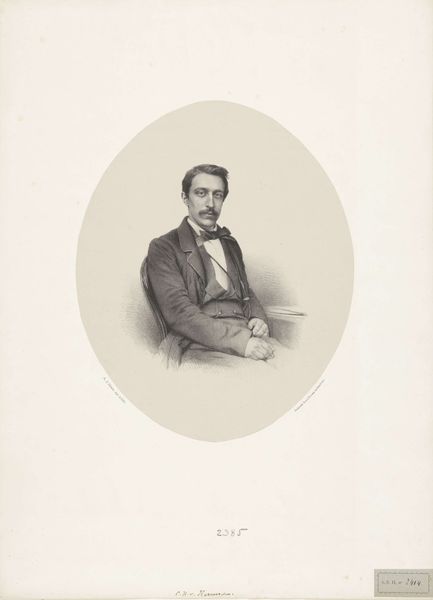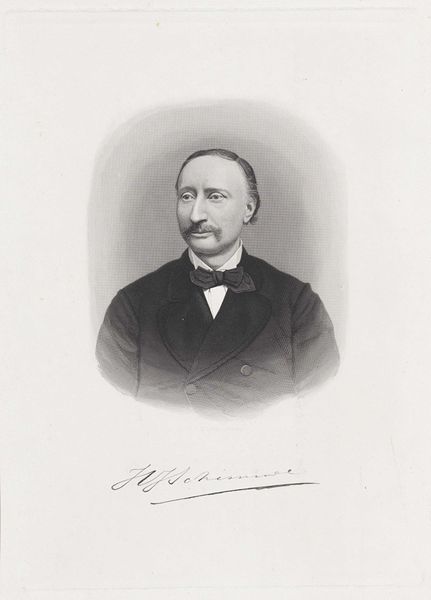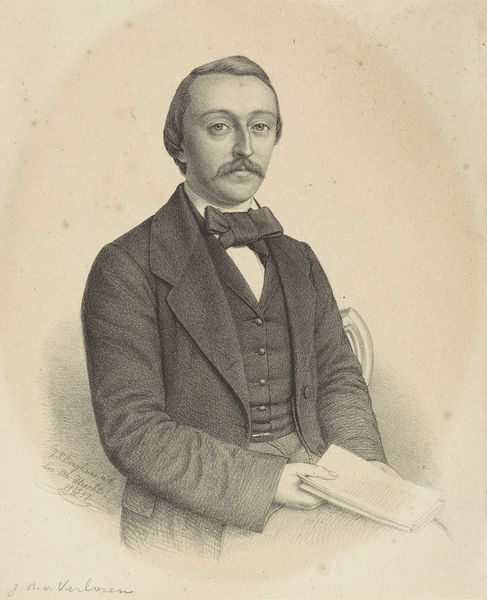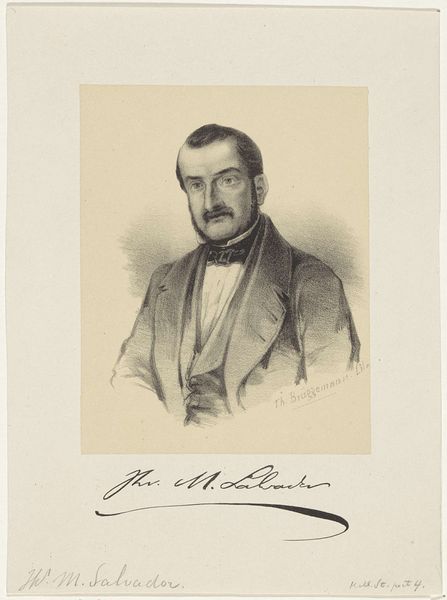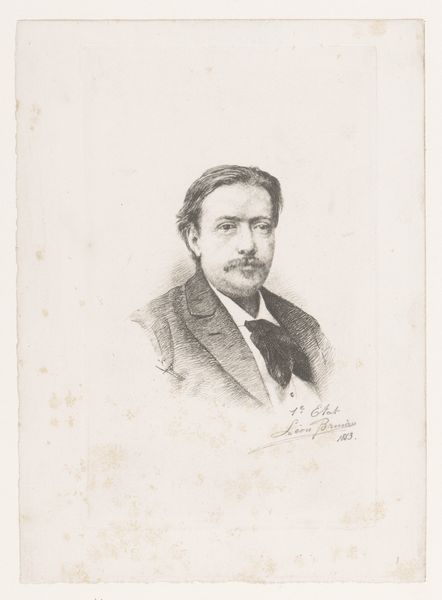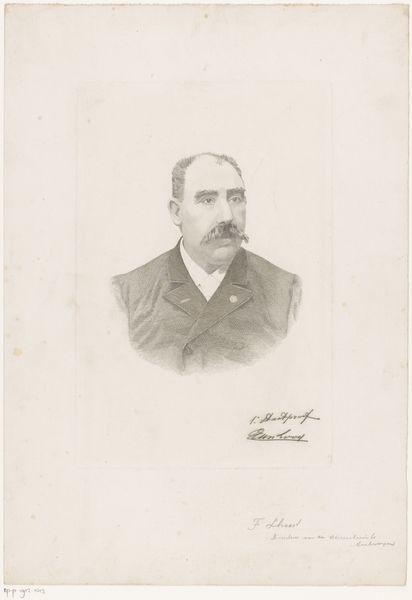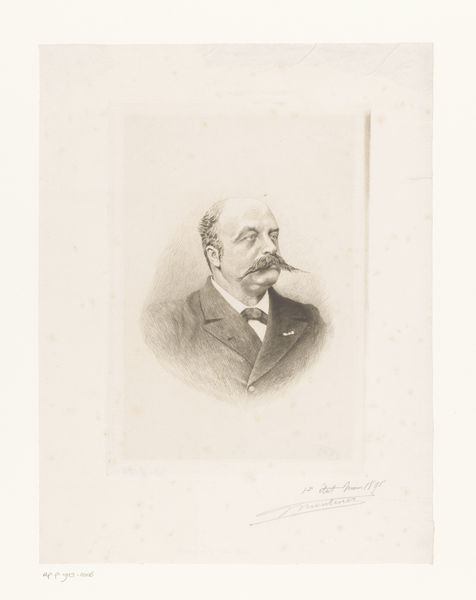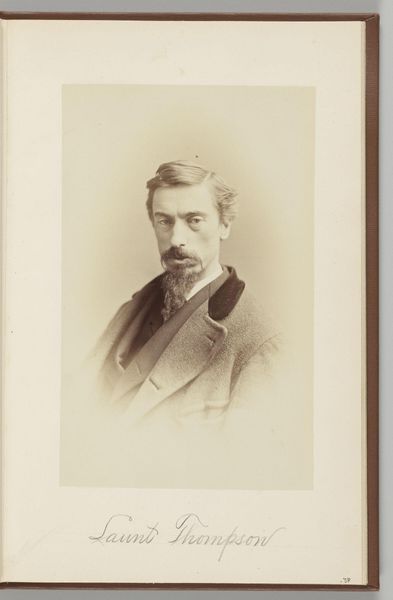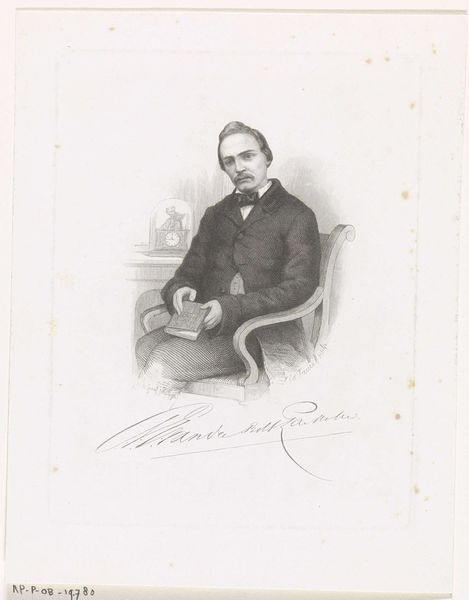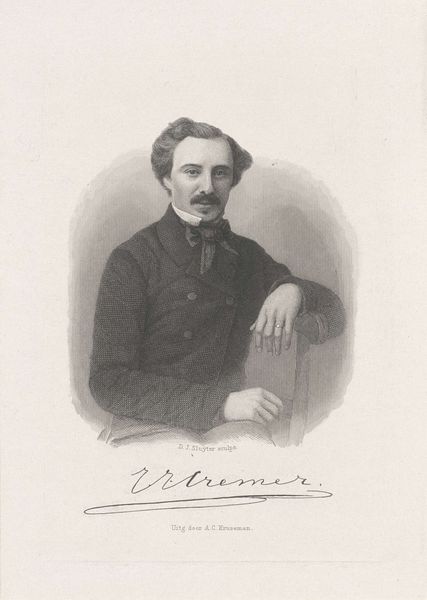
Portret van de stenograaf der Staten Generaal en romanschrijver Gerard Keller 1863
print, graphite, engraving
portrait
pencil drawn
pencil sketch
pencil drawing
graphite
portrait drawing
academic-art
engraving
realism
Dimensions: height 176 mm, width 112 mm
Copyright: Rijks Museum: Open Domain
Dirk Jurriaan Sluyter made this portrait of Gerard Keller with a technique called etching. It's a printmaking process, in which lines are incised into a metal plate with acid, allowing for detailed and precise imagery. You can almost feel the artist's hand at work, carefully layering the lines to create depth and shadow, see how the textures of Keller's suit and hair really come alive. Etching was essential in the nineteenth century, allowing images to be reproduced and disseminated widely. Here, Sluyter’s skill speaks to the industrialized nature of art production at the time, and to the growth of visual culture. This wasn’t just about making beautiful images, it was about fueling an entire industry. By focusing on the ways such a work was made, and the social context in which it circulated, we can understand how so-called ‘fine art’ was actually enmeshed with all kinds of labor, politics, and consumption.
Comments
No comments
Be the first to comment and join the conversation on the ultimate creative platform.
